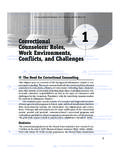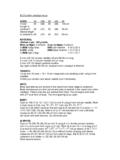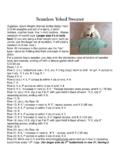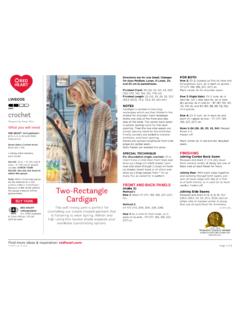Transcription of GENERAL DIRECTIONS FOR CHICKEN SCRATCH
1 GENERAL DIRECTIONS FOR CHICKENSCRATCHFABRICC hicken SCRATCH is usually worked on gingham check in order to give it the lacy appearance which has made it sopopular. Any of the woven or printed ginghams can be used for working CHICKEN SCRATCH . When working withmost of the 1/8 inch and 1/16 inch ginghams, all that I have found are rectangles and not squares. Therefore,before starting your work, you must determine the square count per inch of your gingham. If you do not deter-mine the count before you start, you may not cut enough material to Finish the design!
2 With a ruler, countthe number of squares in one inch of fabric from side to side, and then from top to bottom. On 1/8 inch checkedgingham, you will usually find that you have eight checks from side to side (selvage to selvage) and seven checksfrom top to bottom. This will vary according to the size of the check of the gingham, and from manufacturer tomanufacturer. Always measure to be safe! Once you have determined the number of checks per inch in the heightand width of your fabric, then divide by the determined number into the stitch count of the design in order todetermine the amount of fabric you need to cut.
3 We generally recommend that you have eight (or sixteen) checksper inch for the width of the design. For example - the stitch count of the design that you want to work is 88stitches wide and 77 stitches high. If you are going to work it on 1/8 inch check, and have turned the fabric sothat you have 8 checks per inch in the width of the fabric, and 7 per inch in the height, then you would divide 88(stitches wide) by 8 (checks per inch) = 11 inches of material needed for the width of the design, and then divide77 (stitches high) by 7 (checks per inch) = 11 inches of material needed for the height of the design.
4 Then youwould add an appropriate amount (6 to 8 inches) for enough of a border for finishing. NOTE: If you are planningon incorporating the design into a garment or other sewn item, work the item first on a larger piece of fabric thanis called for in the pattern, then cut it out with the design all of the design using a wooden scroll frame or a plastic embroidery hoop with the fabric pulled taut. (Becareful when stretching the fabric in the hoop, as the thinner cotton blends will distort if pulled too tightly andleave a hoop mark.)
5 Always wash your hands before starting work, and never eat while you are stitching to keepfrom having to deal with an unsightly hoop mark. You may protect it from a hoop mark by lining the top of thearea to be worked with tissue paper and placing tissue paper and fabric in hoop. Stretch both, and then gentlytear out the center of the paper, leaving it around the sides of the fabric and in the hoop. Remove hoop if you aregoing to leave the item unworried for more than a few #24 tapestry needle or a #7 or 8 crewel needle may be used.
6 (I prefer the tapestry needle so as not to prick myfinger!).FLOSSDMC Article 117 six strand embroidery floss is used throughout, except where specified, but you may use SusanBates floss, or Coats and Clark floss, or any thread that gives you the proper weight needed for the size check onwhich you are working. On Guildford Gingham (an even weave) use two (or three strands). On 1/4 inch checkuse three strands, on 1/8 inch use two strands, and on /16 inch use only one strand. For traditional ChickenScratch white is the floss color of choice for the filling stitches, with the outline stitch worked in the same coloras the darkest check of the gingham you have chosen to work.
7 (On blue ingham, use a darker blue, on red, adarker red, etc.). You may also reverse the colors for Reverse CHICKEN SCRATCH , or you may use the samecolor throughout, or mix the colors as you outline is indicated on the chart by the symbol . This is worked on the WHITE square of the gingham inthe color indicated on the chart (the darkest color of the gingham for traditional). The stitch used is a doublecross stitch worked by forming an x and then working a + over the top of the x . ILLUSTRATION 1 Just be sure that all of the top stitches in the double cross stitch are worked in the same direction.
8 On the largergingham checks (1/4 inch) use two or three strands of floss, on 1/8 inch and 1/6 inch use two strands, and on thesmallest, /16 inch use one strand of floss. Work the entire outline of the design first, leaving the space betweeneach of the outline stitches unworked. Begin the filling stitches with the symbol x. NOTE: The symbol x is alsoworked in the double cross stitch, but on the DARK square of the gingham inside the outline stitch. Work this incolor floss indicated on the chart. (White for traditional.) Complete all of the inside double cross stitches.
9 Thesymbols - and I are straight stitches which are worked in the direction indicated on the chart. It is worked on theMEDIUM colored square in the middle of the square. You may work all of the straight stitches by passing yourneedle over a medium square and under a white square, then back over the next medium square, and so on, in arunning stitch. Complete all of the straight stitches using color indicated on chart (white for traditional). Thesymbol O is worked as a circle by weaving the needle underneath the four straight stitches.
10 Come up from theback of the fabric in the same hole as one of the straight stitches (or just behind and to one side of the straightstitch) next to the white square. Then weave the needle underneath each of the straight stitches to form a NOT pick up any of the fabric in the needle, just go under the floss of the straight stitches. You may eithergo around the circle twice, or you may double the amount of floss that you used for the outline and other fillingstitches and only go around the circle one time. Try not to pull the circle too tightly, as you do not want topucker the material.








